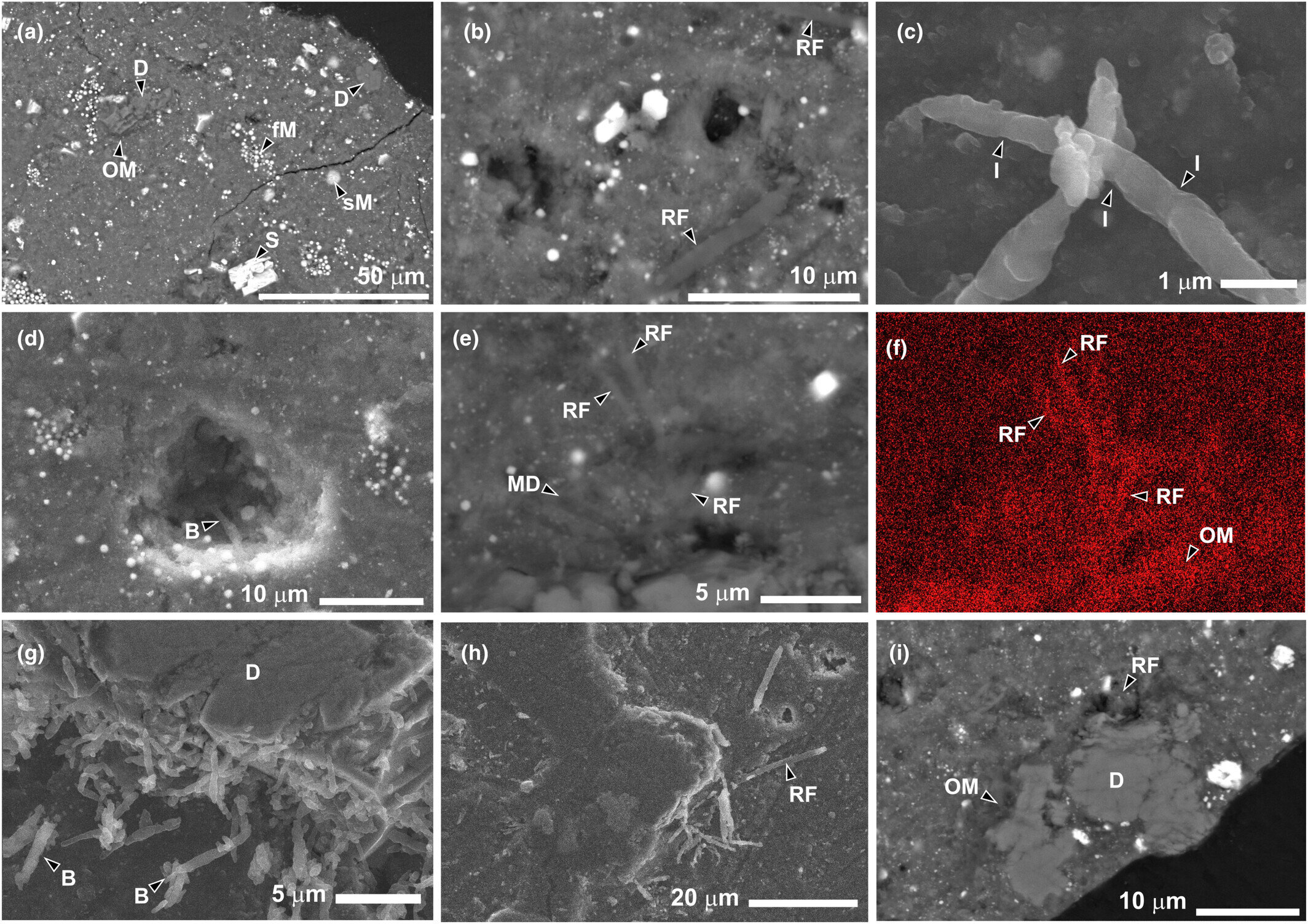Life discovered on a sample from asteroid Ryugu (oops) 👽
Follow us on Google News (click on ☆)

Microbial structures observed on the Ryugu sample, showing colonization by terrestrial organisms.
Credit: Meteoritics & Planetary Science (2024). DOI: 10.1111/maps.14288
The team at Imperial College London discovered that terrestrial microbes quickly invaded this sample, despite advanced protective protocols. After being transported in an airtight chamber and opened in a cleanroom environment, the analysis of the 1 mm-wide grain revealed filamentous organic structures on its surface. These filaments, resembling terrestrial bacteria, multiplied, evidencing rapid generation in just a few days.
The researchers confirmed that these microbes originated from terrestrial contamination during the preparation process. Despite meticulous handling, extraterrestrial samples remain vulnerable to microbial invasion. This finding highlights a paradox: how can the integrity of a sample from elsewhere be ensured when Earth teems with microscopic life?
This study also sheds light on a challenge for interplanetary missions. Cleanrooms, designed to prevent contamination, are not foolproof. Some bacteria even develop strategies to survive disinfectants and adapt to their environment. These findings challenge existing protocols and call for even stricter measures for future missions.
However, the hypothesis of panspermia is not dismissed. This phenomenon, which suggests that life can travel between planets, resonates here. The ability of terrestrial microbes to thrive on material of extraterrestrial origin shows that such environments are not necessarily hostile to life. But to prove that life can originate or travel from another world, clearly extraterrestrial biological signatures will need to be identified.
These discoveries also raise questions about the impact of human missions into space. If terrestrial microbes can survive on samples, they might just as easily colonize lunar or Martian environments. This could compromise efforts to detect native life on these worlds.
The ubiquity of life on Earth underscores an essential truth: every nook and cranny is exploited. This could explain why no entirely new form of life has emerged in billions of years. On our planet, a closed and saturated system, any new organism would have little chance of surviving against more evolved competitors.